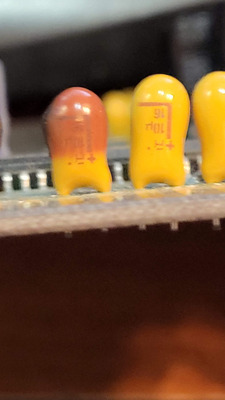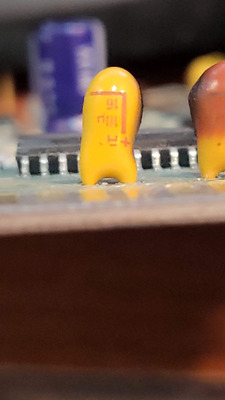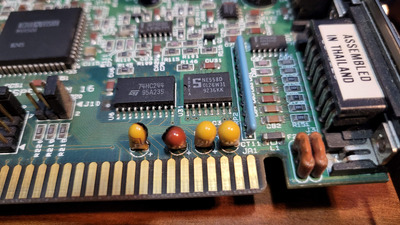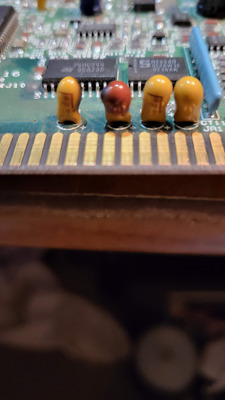First post, by nathanieltolbert
Hello everyone. A friend of mine out of state needed some work done on their 486 machine that was having problems. Turns out the cache chips had gone bad and it was a simple fix. When he sent the motherboard he also sent a MediaVision Pro Audio Spectrum 16 sound card to let me try it out because I have never had a chance to take a look at one in person. He had purchased it online at an auction site and he hadn't used it yet either. I installed the card in a VLB 486 board I have and I pressed the power button. There was a rapid ticking sound and then a woosh and I could see small flames shooting up from the board and the case rapidly filled with smoke as I hit the power button and pulled the power cable. I pulled the card and checked the motherboard. The motherboard is fine as is everything attached to it. But the card has two burned yellow parts near the larger row of ISA connectors. They are labeled CT7 and CT8. They are both damaged and I can't read the values on the parts. Are this capacitors? Can I replace these safely and get the card working again? I am trying to get the photos of the board uploaded so I can share them. As soon as they are available I will share them. Also, if they can be replaced and the card can be saved, should I replace all of these yellow parts?



